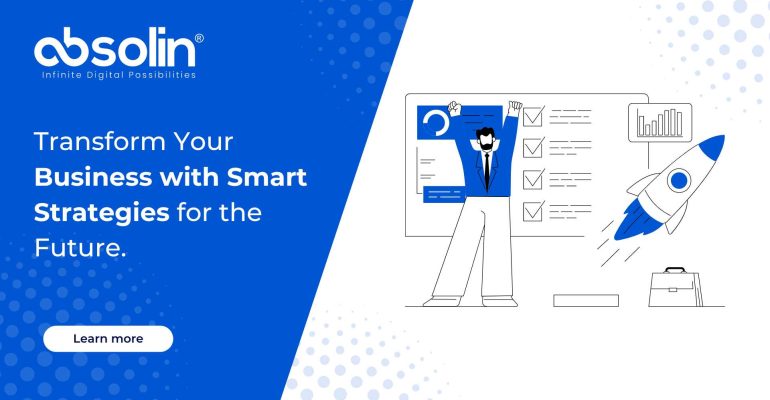Navigating the Digital Transformation: Key Strategies for Modern Businesses
In today’s fast-paced business environment, digital transformation is not just a buzzword—it’s a necessity for survival and growth. As technology continues to evolve at an unprecedented rate, businesses must adapt to remain competitive. However, navigating the digital transformation journey can be complex and challenging. This blog outlines key strategies that modern businesses can implement to successfully embrace digital transformation and stay ahead of the curve.
1. Develop a Clear Vision and Strategy
The foundation of any successful digital transformation is a clear vision aligned with the company’s overall goals. Before diving into the adoption of new technologies, businesses should define what digital transformation means for them. This involves understanding the specific challenges and opportunities within their industry and setting realistic objectives that can guide the transformation process.
A well-defined strategy should address the following:
- Business Objectives: What are the primary goals of the digital transformation? Are you looking to improve customer experience, enhance operational efficiency, or open new revenue streams?
- Technology Alignment: How do the chosen technologies align with your business objectives? For instance, is AI being used to improve decision-making, or is cloud computing being adopted for greater scalability?
- Roadmap: What are the milestones and timelines for achieving your digital transformation goals? A phased approach often works best, allowing businesses to measure progress and make adjustments as needed.
2. Invest in the Right Technologies
Digital transformation is fueled by the adoption of new technologies, but it’s essential to choose the right tools for your specific needs. Here are a few technologies that are driving transformation across industries:
- Artificial Intelligence (AI) and Machine Learning: These technologies enable businesses to analyze vast amounts of data, automate processes, and deliver personalized customer experiences.
- Cloud Computing: The cloud offers scalability, flexibility, and cost savings by allowing businesses to store and access data from anywhere, at any time.
- Internet of Things (IoT): IoT devices collect real-time data, helping businesses optimize operations, reduce costs, and improve customer service.
- Robotic Process Automation (RPA): RPA automates repetitive tasks, freeing up employees to focus on higher-value work.
Investing in these technologies requires careful planning. Businesses must assess their current infrastructure, identify gaps, and select technologies that will deliver the greatest value.
3. Focus on Customer Experience
At the heart of digital transformation is the customer. Modern consumers expect seamless, personalized experiences across all touchpoints. To meet these expectations, businesses must adopt a customer-centric approach to digital transformation.
- Data-Driven Insights: Leverage data analytics to gain insights into customer behavior, preferences, and pain points. This information can be used to tailor products, services, and marketing efforts to meet customer needs.
- Omnichannel Engagement: Ensure that customers have a consistent experience, whether they’re interacting with your brand online, through mobile apps, or in physical stores. Integrate all customer touchpoints to create a unified experience.
- Personalization: Use AI and machine learning to deliver personalized content, recommendations, and offers that resonate with individual customers.
By prioritizing customer experience, businesses can build stronger relationships, increase loyalty, and drive growth.
4. Empower Your Workforce
Digital transformation isn’t just about technology; it’s also about people. The success of your transformation efforts depends on your employees’ ability to adapt to new tools and processes. To empower your workforce:
- Training and Development: Provide employees with the necessary training to use new technologies effectively. This can include workshops, online courses, and hands-on practice.
- Change Management: Implement a change management strategy that addresses the human side of digital transformation. Communicate the benefits of transformation clearly, and involve employees in the process to reduce resistance and foster buy-in.
- Collaboration Tools: Adopt digital tools that enhance collaboration and communication among teams, especially in a remote or hybrid work environment.
An empowered workforce is more likely to embrace change, drive innovation, and contribute to the overall success of your digital transformation efforts.
5. Measure and Optimize Continuously
Digital transformation is an ongoing journey, not a one-time project. To ensure continuous improvement, businesses must regularly measure the effectiveness of their digital initiatives and make data-driven adjustments.
- Key Performance Indicators (KPIs): Identify KPIs that align with your business objectives, such as customer satisfaction, operational efficiency, and revenue growth. Track these metrics to gauge the impact of your digital transformation efforts.
- Feedback Loops: Establish feedback loops that allow for real-time monitoring and quick adjustments. This could involve regular reviews of performance data, customer feedback, and employee input.
- Agility: Foster an agile culture that encourages experimentation, learning, and rapid iteration. The ability to pivot quickly in response to changing market conditions is crucial for staying competitive.
By continuously measuring and optimizing your digital transformation strategy, you can adapt to emerging trends, overcome challenges, and sustain long-term success.
Conclusion
Digital transformation is a complex yet rewarding journey that requires careful planning, the right technologies, a focus on customer experience, workforce empowerment, and continuous optimization. By implementing these key strategies, modern businesses can successfully navigate the digital landscape, drive innovation, and secure a competitive advantage in today’s ever-evolving market.






